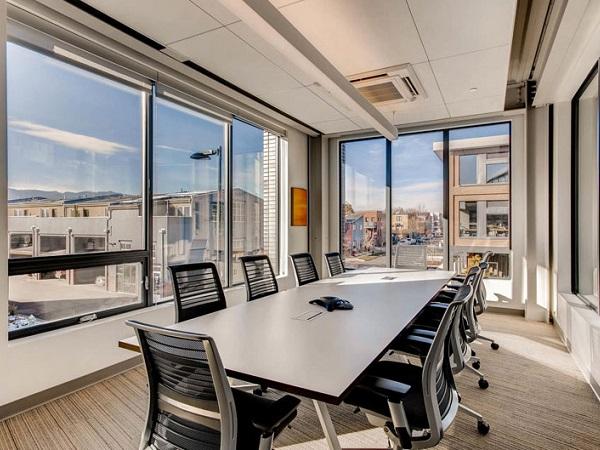
Date: 22 November 2018
The project sets a new paradigm for zero energy lease structures, alternative mobility and high-performance speculative buildings.
Alpen fiberglass windows provide a critical element of these two 100,000 square foot NZE/ZE buildings.
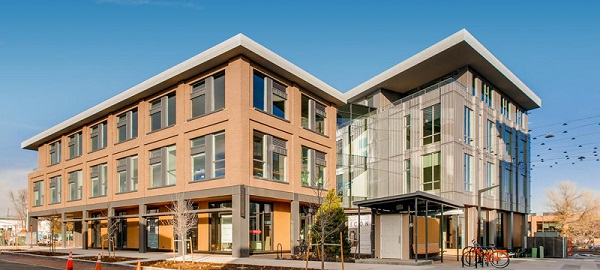
Zero energy buildings have recently experienced a boom in popularity. But despite industry progress, the number of leased ZE buildings lags significantly behind owner-occupied projects.
Over half of commercial buildings nationally are leased, which presents a significant impediment to meeting carbon reduction targets. Boulder Commons boasts Colorado’s first NZE lease, and the first NZE lease in the country for a project of this size, setting a new precedent for other landlords and tenants to follow.
Boulder Commons is demonstrating the unique values driven by net-zero carbon buildings and districts to drive competitive advantage, while providing a mechanism to economically support the global transition to clean, renewable energy.
Goals of sustainability and construction technologies
Alpen worked closely with the developers, designers and energy consults to assure the comfort, cost, energy consumption and net-zero certification goals were achieved. In order to make the building highly sustainable, a number of strategies were designed into the project from the outset.
In addition to the solar array tuned to the building’s aspect on the site, the project sought to reduce its demand loads on an annualized basis. The two buildings provide optimum widths for daylighting.
Designing the building’s east side to “erode away” provided opportunities for internal residential and commercial plazas, reducing the need for artificial light. A responsive HVAC strategy allows the building to respond to the actual unit needs rather than conditioning on a full-building scale, and a variety of unit and tenant-based ides were considered to reduce plug loads.
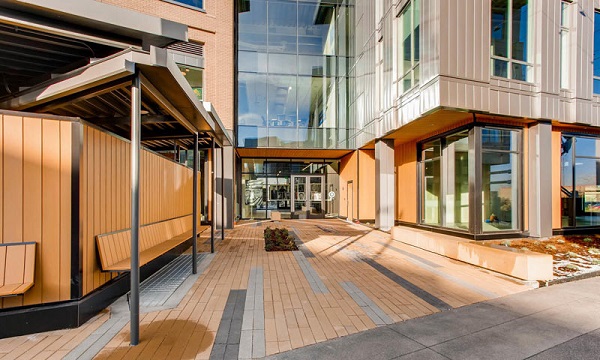
How Alpen products were integrated
Alpen High Performance Products were integral to these highly advanced building envelope components, reducing heat gain in summer and heat loss in winter:
- Thermally broken 3-pane fiberglass windows
- Tuned to both direction and window-to-glass ratios, per façade
- Functional overhangs
- Solar awnings
- A high level of unbroken insulation in the walls and roof
- Very low air infiltration rates
- Architecturally designed shades
The problems and their solutions
In general, the problems and solutions involved issues of controlling interior and exterior surface temperatures: Temperature, windspeed, shading and direct solar radiation.
Problem #1: Low-energy HVAC System
The energy modelers recommended windows of R-5 or better to reduce heating and cooling loads caused by the design’s high glass-to-total-wall ratio. High performance windows also reduced the level of wall insulation needed, potentially reducing construction costs, wall thickness and wall assembly complexity. Additionally, the high-glass-percentage skin and perimeter offices necessitated high levels of comfort—but net-zero goals required avoidance of perimeter baseboard heating.
Solution #1
Alpen Zenith Series ZR-6 Windows
- Whole-window U-0.17 fixed / U-0.20 operable
- Center of glass U-0.13
- Fiberglass frame, triple pane windows with suspended coated film produced comfortable and highly insulated spaces without the added weight of a third glass pane, which can add cost to both installation and handling.
- High performance windows provide unprecedented occupant comfort, noise rejection, UV blockage and condensation freedom.
SolarControl glass
- In Colorado, the 0.24 SHGC was critically important on the western- and eastern-facing windows to better control cooling demand and avoid occupant overheating
- The actual environmental conditions being controlled:
Winter — 0° outside, 70° inside, 12 mph wind, no solar radiation
Summer — 90° outside, 75° inside, 6mph wind, 248 Btu/hr•ft2F° direct solar radiation
Problem #2: Building Orientation
Due to the configuration of the property, the design of Boulder Commons had a very strong east/west orientation, leading to potentially critical solar control and cooling issues.
Solution #2
As with the HVAC solutions, high performance fiberglass windows coupled with SolarControl glass were the key to resolving potential solar gain issues common in very sunny locations.
Problem #3: Daylighting vs. Thermal Heat Gain
Boulder Commons exhibited a unique setting, where daylight was needed to light interior spaces—both saving energy and decreasing heat load—while solar gain had to be controlled to preserve occupant visual and thermal comfort, maintain the effectiveness of the low-energy HVAC system and support NZE certification.
Solution #3
- Automated shading was utilized to prevent occupant “override” of intended daylighting.
- Daylight redirecting optical film, by Serralux, was used throughout the dominant southeast clerestory glazing to redirect 80%+ of incident daylight upward and inward. This decreased glare and cast natural light further into the buildings, so even work spaces near the core were naturally well lit by daylight.
Boulder Commons is driving massive market growth for net-zero carbon districts that provide a compelling financial case across stakeholder groups, including developers, owners, tenants and occupants. These districts drive new sources of value, lead the market and support the global transition to clean renewable energy.
Alpen High Performance Products is proud to be part of a team that is leading the way towards a net-zero energy future.
To learn more about Boulder Commons and leased zero energy buildings, please visit the CBRE website or see the Boulder Commons and NZE leasing best practices documents, created by our friends at RMI.
 600450
600450



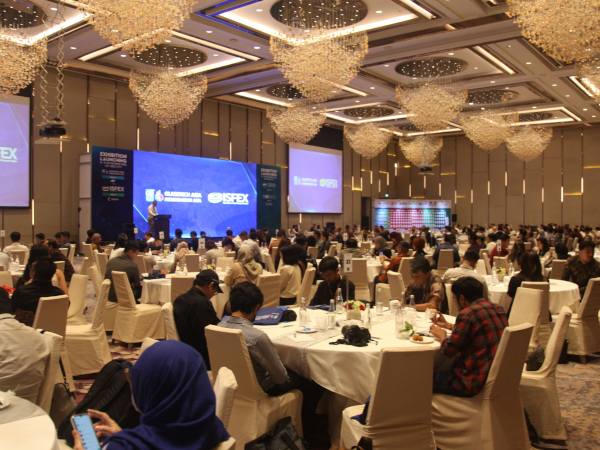













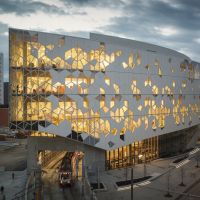


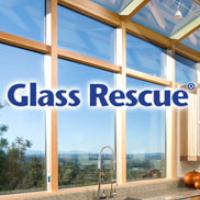
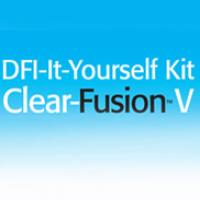
Add new comment